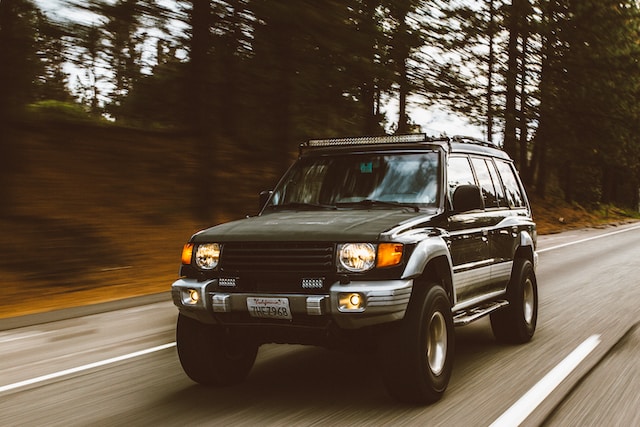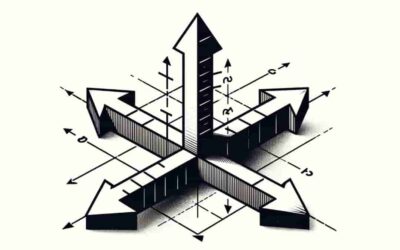1. A car travels 150 km in 3 hours. What is its average speed?
The average speed of the car for the entire journey can be calculated by dividing the total distance travelled by the total time taken. The formula is:
\( \text{Average speed} = \dfrac{\text{Total distance}}{\text{Total time}} \)
Using the given data, we can plug in the values and get the answer:
\( \text{Average speed} = \dfrac{120 + 180}{2 + 3} \)
\( \text{Average speed} = \dfrac{300}{5} \)
\( \text{Average speed} = 60 \text{ km/h} \)
Therefore, the average speed of the car for the entire journey is 60 km/hr .
2. A car travels 120 km in 2 hours and then another 180 km in 3 hours. What is its average speed for the entire journey?
The average speed of the car for the entire journey can be calculated by dividing the total distance travelled by the total time taken. The formula is:
\( \text{Average speed} = \dfrac{\text{Total distance}}{\text{Total time}} \)
Using the given data, we can plug in the values and get the answer:
\( \text{Average speed} = \dfrac{120 + 180}{2 + 3} \)
\( \text{Average speed} = \dfrac{300}{5} \)
\( \text{Average speed} = 60 \text{ km/h} \)
Therefore, the average speed of the car for the entire journey is 60 km/h .
3. A car travels the first half of its journey at a speed of 60 km/h and the second half at 80 km/h. If the total journey is 280 km, how long did the journey take?
To solve this problem, we need to find the time taken by the car for each half of the journey and then add them up. We can use the formula:
\( \text{Time} = \dfrac{\text{Distance}}{\text{Speed}} \)
Let $d$ be the distance of each half of the journey. Then we have:
\( d = \dfrac{280}{2} = 140 \text{ km} \)
The time taken by the car for the first half of the journey is:
\( t_1 = \dfrac{d}{60} = \dfrac{140}{60} = \dfrac{7}{3} \text{ hours} \)
The time taken by the car for the second half of the journey is:
\( t_2 = \dfrac{d}{80} = \dfrac{140}{80} = \dfrac{7}{4} \text{ hours} \)
The total time taken by the car for the entire journey is:
\( t = t_1 + t_2 = \dfrac{7}{3} + \dfrac{7}{4} = \dfrac{49}{12} \text{ hours} \)
Therefore, the journey took \( \dfrac{49}{12} \) hours or approximately 4.08 hours .
4. A car travels 200 km at an average speed of 50 km/h. However, the car had stopped for a total of 30 minutes during the journey. What was the actual average speed of the car including the stoppage time?
To find the actual average speed of the car, we need to consider the total time taken for the journey, including the stoppage time. We can use the formula:
\( \text{Average speed} = \frac{\text{Total distance}}{\text{Total time}} \)
Using the given data, we can plug in the values and get the answer:
\( \text{Total distance} = 200 \text{ km} \)
\( \text{Total time} = \frac{200}{50} + \frac{30}{60} = 4.5 \text{ hours} \)
\( \text{Average speed} = \frac{200}{4.5} \approx 44.44 \text{ km/h} \)
Therefore, the actual average speed of the car including the stoppage time is approximately 44.44 km/h.
5. A car accelerates from rest to 60 km/h in 10 seconds. It then maintains this speed for 2 hours. What is the average speed of the car over the entire journey?
To find the average speed of the car over the entire journey, we need to consider the total distance and the total time of the journey. We can use the formula:
\( \text{Average speed} = \dfrac{\text{Total distance}}{\text{Total time}} \)
Using the given data, we can calculate the total distance and the total time as follows:
– The total distance is the sum of the distance covered during acceleration and the distance covered at constant speed. To find the distance covered during acceleration, we can use the formula:
\( \text{Distance} = \dfrac{1}{2} \text{Acceleration} \times \text{Time}^2 \)
Since the car starts from rest, the initial speed is zero. The acceleration is the change in speed divided by the time, which is:
\( \text{Acceleration} = \dfrac{60 – 0}{10} = 6 \text{ km/h}^2 \)
Therefore, the distance covered during acceleration is:
\( \text{Distance} = \dfrac{1}{2} \times 6 \times 10^2 = 300 \text{ km} \)
The distance covered at constant speed is the product of the speed and the time, which is:
\( \text{Distance} = 60 \times 2 = 120 \text{ km} \)
Hence, the total distance is:
\( \text{Total distance} = 300 + 120 = 420 \text{ km} \)
– The total time is the sum of the time taken during acceleration and the time taken at constant speed, which is:
\( \text{Total time} = 10 + 2 = 12 \text{ hours} \)
Now, we can plug in the values and get the answer:
\( \text{Average speed} = \dfrac{420}{12} \approx 35 \text{ km/h} \)
Therefore, the average speed of the car over the entire journey is approximately 35 km/h .
6. A car travels the first 100 km of its journey at 50 km/h, the next 200 km at 100 km/h, and the final 100 km at 80 km/h. What is the average speed for the entire journey?
To find the average speed for the entire journey, we need to consider the total distance and the total time of the journey. We can use the formula:
\( \text{Average speed} = \dfrac{\text{Total distance}}{\text{Total time}} \)
Using the given data, we can calculate the total distance and the total time as follows:
– The total distance is the sum of the distances covered in each part of the journey, which is:
\( \text{Total distance} = 100 + 200 + 100 = 400 \text{ km} \)
– The total time is the sum of the times taken in each part of the journey. To find the time taken in each part, we can use the formula:
\( \text{Time} = \dfrac{\text{Distance}}{\text{Speed}} \)
Therefore, the time taken in the first part of the journey is:
\( t_1 = \dfrac{100}{50} = 2 \text{ hours} \)
The time taken in the second part of the journey is:
\( t_2 = \dfrac{200}{100} = 2 \text{ hours} \)
The time taken in the final part of the journey is:
\( t_3 = \dfrac{100}{80} = 1.25 \text{ hours} \)
Hence, the total time is:
\( \text{Total time} = t_1 + t_2 + t_3 = 2 + 2 + 1.25 = 5.25 \text{ hours} \)
Now, we can plug in the values and get the answer:
\( \text{Average speed} = \dfrac{400}{5.25} \approx 76.19 \text{ km/h} \)
Therefore, the average speed for the entire journey is approximately 76.19 km/h .
7. If a runner maintains a speed of 8 km/h for 30 minutes, how far do they run?
Here is the solution using MathJax:
Let’s break this down step-by-step:
Speed of the runner = 8 Km/hr
Time run = 30 min = \( \dfrac{1}{2} \) hr
Using the formula: \( \text{Distance} = \text{Speed} \times \text{Time} \)
Plugging in the values: \( \text{Distance} = (8 \frac{\text{km}}{\text{h}}) \times (0.5\text{ h}) = 4\text{ km} \)
Therefore, the distance run by the runner is 4 Km.
8. A bike increases its speed from 0 to 60 km/h in 5 seconds. What is its acceleration?
To find the acceleration of the bike, we can use the formula:
\( \text{Acceleration} = \dfrac{\text{Change in speed}}{\text{Time taken}} \)
Using the given data, we can plug in the values and get the answer:
\( \text{Acceleration} = \dfrac{60 – 0}{5} = 12 \text{ km/h}^2 \)
Therefore, the acceleration of the bike is 12 km/\({hr^2} \) .
9. How long does it take for a train to reach a speed of 90 km/h from rest if its acceleration is 3 m/s²?
We can use the formula for the final speed of an object undergoing constant acceleration, which is:
\( v = v_0 + at \)
where $v$ is the final speed, $v_0$ is the initial speed, $a$ is the acceleration, and $t$ is the time. We need to solve for $t$.
Solution: Plugging in the given values, we get:
\( 90 = 0 + 3t \)
Solving for $t$, we get:
\( t = \frac{90}{3} = 30 \text{ s} \)
Significance: The train takes 30 seconds to reach a speed of 90 km/h from rest.
If a skateboarder goes from 5 m/s to a stop in 2 seconds, what is their deceleration?
We can use the same formula as before, but this time we need to solve for $a$. The deceleration is the negative of the acceleration.
Solution: Plugging in the given values, we get:
\( 0 = 5 + a(2) \)
Solving for $a$, we get:
\( a = \frac{-5}{2} = -2.5 \text{ m/s}^2 \)
Significance: The skateboarder’s deceleration is -2.5 m/\(s^2\).
10. A person walks 4 km east, then 3 km west. What is their total displacement and distance traveled?
The displacement is the change in position of the person, which is the difference between the final and initial positions. The distance traveled is the total length of the path taken by the person. We can use the sign convention that east is positive and west is negative.
Solution: The initial position of the person is zero. The final position of the person is 4 km east minus 3 km west, which is:
\( x_f = 4 – (-3) = 7 \text{ km east} \)
The displacement of the person is the final position minus the initial position, which is:
\( \Delta x = x_f – x_i = 7 – 0 = 7 \text{ km east} \)
The distance traveled by the person is the sum of the absolute values of the displacements in each direction, which is:
\( d = |4| + |-3| = 4 + 3 = 7 \text{ km} \)
Significance: The person’s displacement is 7 km east and the distance traveled is 7 km.
11. If a distance-time graph shows a slope of 20 km/h, how far does the object travel in 45 minutes?
The slope of a distance-time graph is the speed of the object. We can use the formula for the distance traveled by an object moving at a constant speed, which is:
\( d = vt \)
where $d$ is the distance, $v$ is the speed, and $t$ is the time. We need to convert the time from minutes to hours.
Solution: Converting 45 minutes to hours, we get:
\( t = \frac{45}{60} = 0.75 \text{ h} \)
Plugging in the given values, we get:
\( d = 20 \times 0.75 = 15 \text{ km} \)
Significance: The object travels 15 km in 45 minutes.
12. If a car travels at a constant speed of 60 km/h, how much time will it take to travel 180 km?
We can use the same formula as before, but this time we need to solve for $t$.
Solution: Plugging in the given values, we get:
\( 180 = 60t \)
Solving for $t$, we get:
\( t = \frac{180}{60} = 3 \text{ h} \)
Significance: The car takes 3 hours to travel 180 km.
13. A cyclist travels the first half of a distance at 20 km/h and the second half at 30 km/h. What is the average speed for the entire trip?
The average speed for the entire trip is the total distance divided by the total time. We can use the formula for the distance traveled by an object moving at a constant speed to find the time taken for each half of the trip. We can also use the fact that the distance of each half is the same.
Solution: Let $d$ be the distance of each half of the trip. Then the total distance is $2d$. The time taken for the first half of the trip is:
\( t_1 = \frac{d}{20} \)
The time taken for the second half of the trip is:
\( t_2 = \frac{d}{30} \)
The total time is:
\( t = t_1 + t_2 = \frac{d}{20} + \frac{d}{30} = \frac{5d}{60} \)
The average speed is:
\( v_{avg} = \frac{2d}{t} = \frac{2d}{\frac{5d}{60}} = \frac{120}{5} = 24 \text{ km/h} \)
Significance: The average speed for the entire trip is 24 km/h.
14. A boat travels downstream with a speed of 10 km/h and returns upstream at 4 km/h. What is the average speed for the round trip?
The average speed for the round trip is the total distance divided by the total time. We can use the formula for the distance traveled by an object moving at a constant speed to find the time taken for each leg of the trip. We can also use the fact that the distance of each leg is the same.
Solution: Let $d$ be the distance of each leg of the trip. Then the total distance is $2d$. The time taken for the downstream leg of the trip is:
\( t_1 = \frac{d}{10} \)
The time taken for the upstream leg of the trip is:
\( t_2 = \frac{d}{4} \)
The total time is:
\( t = t_1 + t_2 = \frac{d}{10} + \frac{d}{4} = \frac{7d}{20} \)
The average speed is:
\( v_{avg} = \frac{2d}{t} = \frac{2d}{\frac{7d}{20}} = \frac{40}{7} \approx 5.71 \text{ km/h} \)
Significance: The average speed for the round trip is approximately 5.71 km/h.




0 Comments